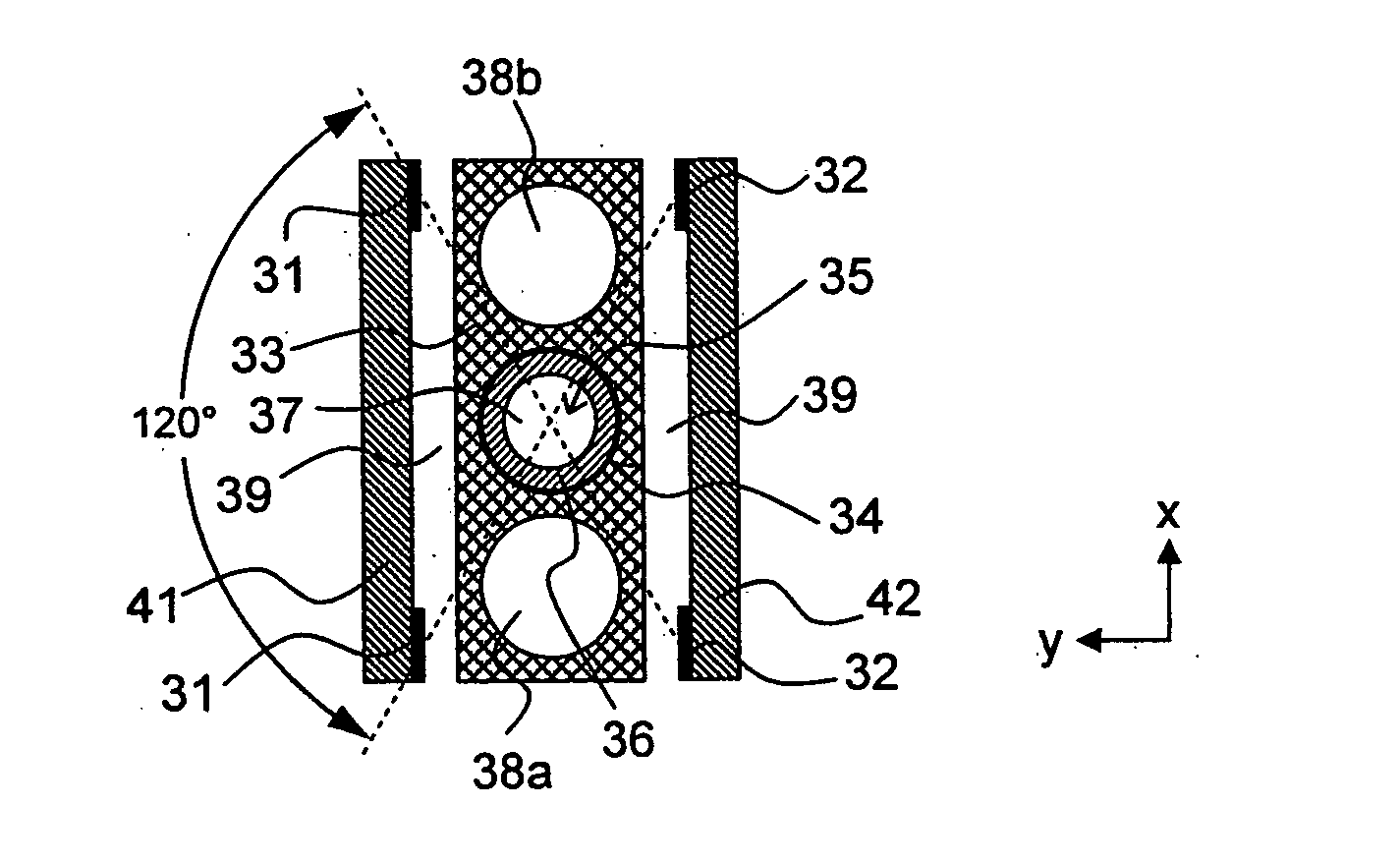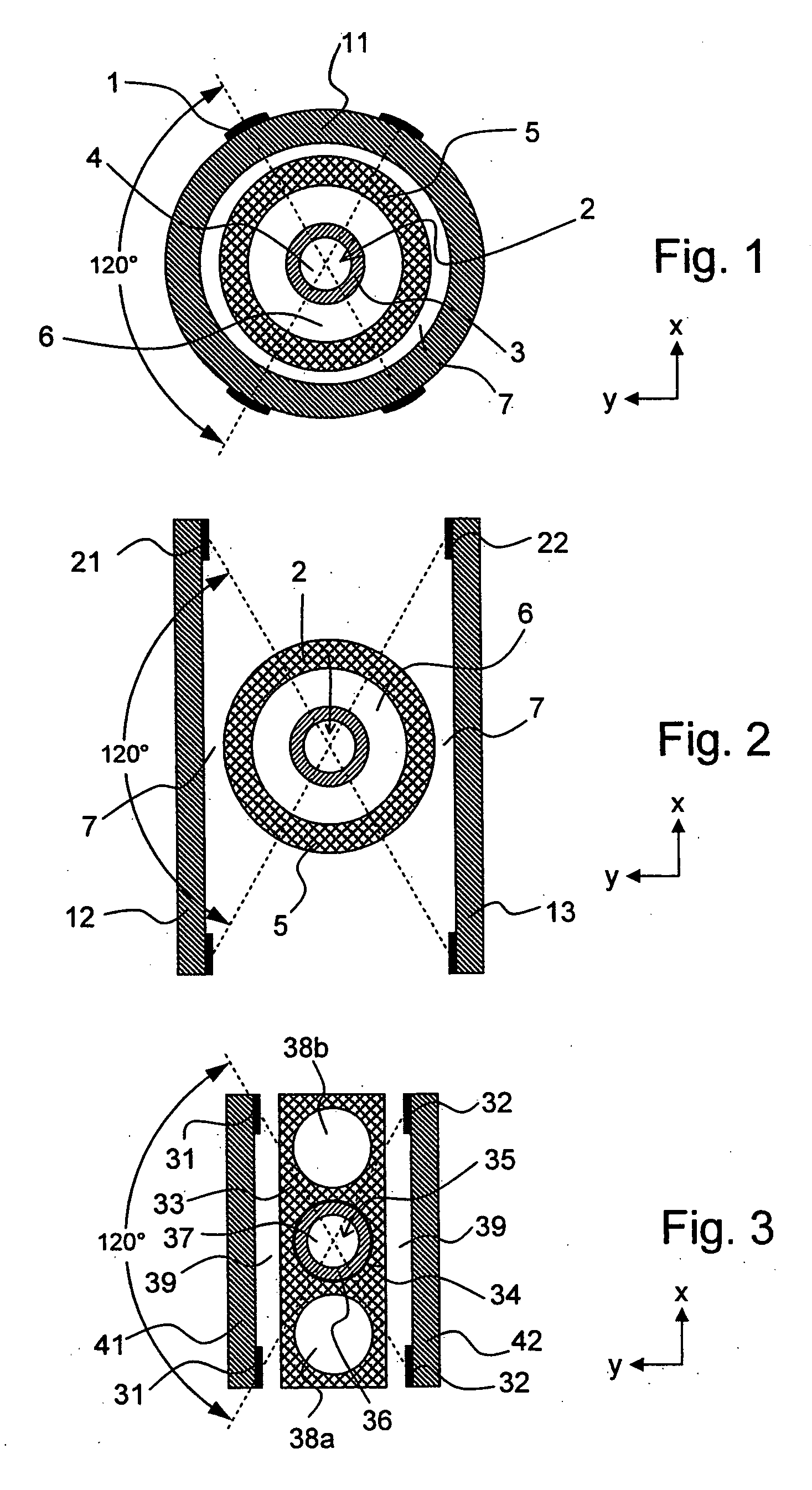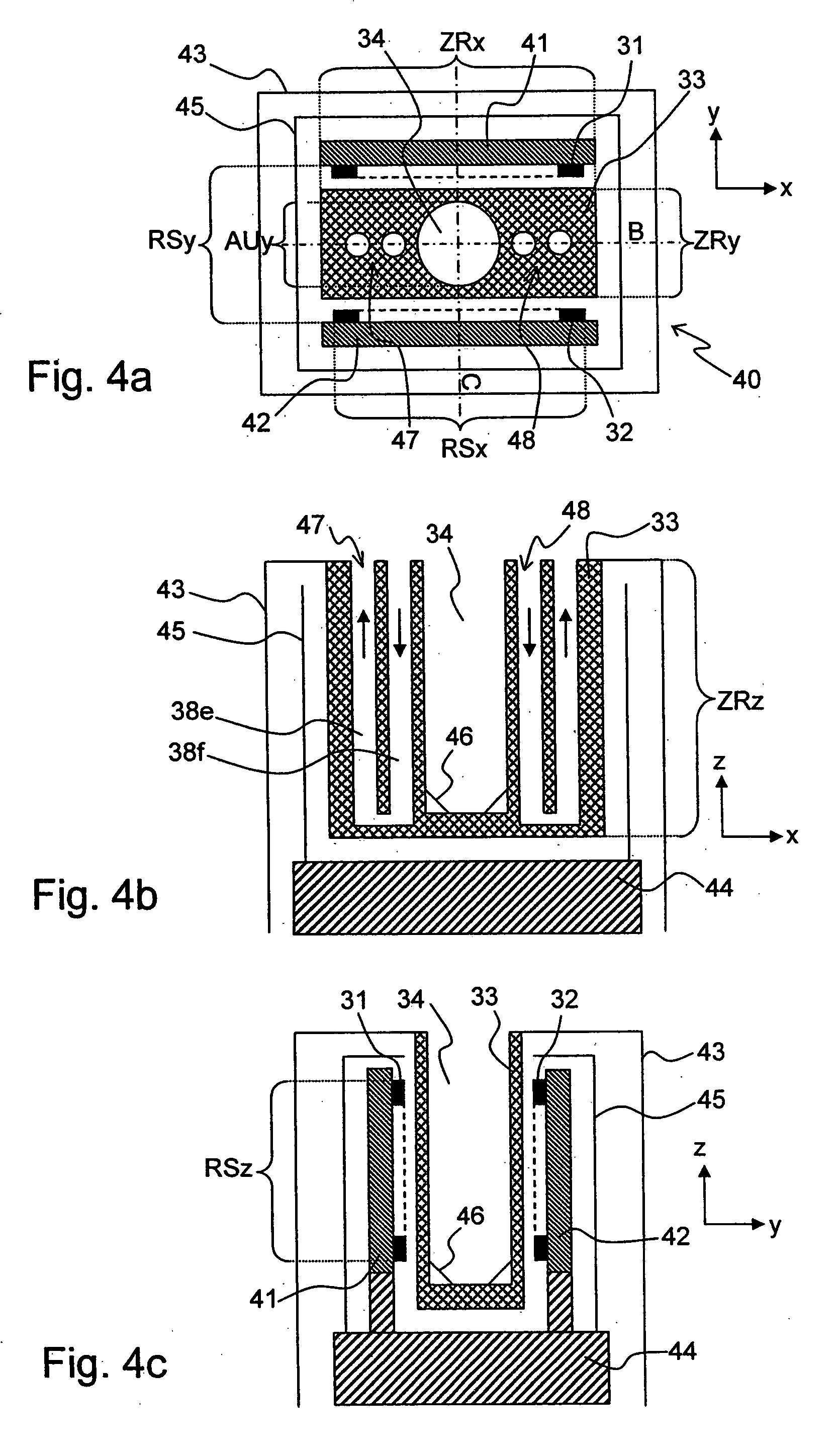Vacuum container for cooled magnetic resonance probe head
a magnetic resonance and vacuum container technology, applied in the field of magnetic resonance probe heads, can solve problems such as deteriorating efficiency/filling factor, and achieve the effects of improving thermal flow, good magnetic field homogeneity, and simple production
- Summary
- Abstract
- Description
- Claims
- Application Information
AI Technical Summary
Benefits of technology
Problems solved by technology
Method used
Image
Examples
Embodiment Construction
[0077]The invention concerns a vacuum container for a cooled magnetic resonance probe head.
[0078]The sensitivity of high-resolution nuclear magnetic resonance (NMR) spectroscopy and NMR microscopy has been substantially increased recently by using cooled magnetic resonance probe heads.
[0079]The receiver coils and the receiving electronics of these probe heads are usually cooled to cryogenic temperatures, i.e. temperatures below 100 K. Cooling reduces thermal noise of the resistive elements and also the RF resistance of metals. It moreover enables use of superconductors for the transmitting / receiver coils. Cooled electronics can be produced with a lower noise temperature than conventional electronics.
[0080]One of the major problems of cooled magnetic resonance probe heads is the requirement to achieve cryogenic temperatures for the transmitting / receiver coils and at the same time maintain the test samples close to room temperature (−40 to +200° C.), since the test substances (or test...
PUM
| Property | Measurement | Unit |
|---|---|---|
| diameter | aaaaa | aaaaa |
| static magnetic fields | aaaaa | aaaaa |
| temperature | aaaaa | aaaaa |
Abstract
Description
Claims
Application Information
 Login to View More
Login to View More - R&D
- Intellectual Property
- Life Sciences
- Materials
- Tech Scout
- Unparalleled Data Quality
- Higher Quality Content
- 60% Fewer Hallucinations
Browse by: Latest US Patents, China's latest patents, Technical Efficacy Thesaurus, Application Domain, Technology Topic, Popular Technical Reports.
© 2025 PatSnap. All rights reserved.Legal|Privacy policy|Modern Slavery Act Transparency Statement|Sitemap|About US| Contact US: help@patsnap.com



